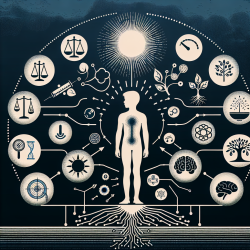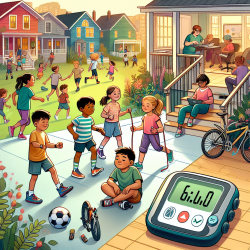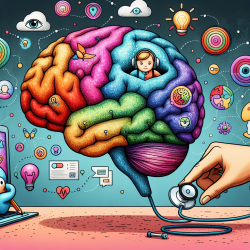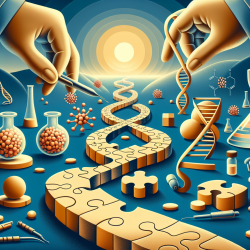Understanding Pubertal Hormones: A Key to Enhancing Child Well-being
As practitioners dedicated to improving child outcomes, understanding the intricate relationship between pubertal hormones and psychological well-being is crucial. A recent study titled A dual-system, machine-learning approach reveals how daily pubertal hormones relate to psychological well-being in everyday life sheds light on this complex interaction. This research offers valuable insights that can enhance our approach to supporting adolescents during this critical developmental phase.
The Study at a Glance
The study utilized a dual-system, machine-learning approach to analyze how daily fluctuations in pubertal hormones impact adolescents' psychological well-being. By examining the Hypothalamic Pituitary Adrenal (HPA) and Hypothalamic Pituitary Gonadal (HPG) axes, researchers were able to identify patterns that correlate with mental health outcomes such as daily affect and stress coping. Notably, the study found that HPG activity, rather than HPA activity, was associated with improved daily affect ratios and stress coping.
Key Findings and Implications
- Two-Factor Model: The research supports a two-factor model of adolescent hormones, highlighting the distinct yet interconnected roles of the HPA and HPG axes. This finding underscores the importance of considering both systems when assessing adolescent well-being.
- HPG Activity: Increased HPG activity was linked to better psychological outcomes, suggesting that these hormones play a protective role in adolescent mental health. This challenges the traditional focus on HPA hormones and opens new avenues for intervention.
- Machine Learning Insights: The use of Bayesian Additive Regression Trees (BART) allowed for a nuanced analysis of hormone interactions, providing a robust framework for understanding the complex dynamics at play.
Practical Applications for Practitioners
For practitioners in speech-language pathology and related fields, these findings offer actionable insights:
- Holistic Assessments: Incorporate assessments of both HPA and HPG activity in evaluations of adolescent clients. Understanding the hormonal context can provide a more comprehensive picture of a child's well-being.
- Intervention Strategies: Develop interventions that support the balance of HPG activity, potentially through lifestyle modifications or stress management techniques, to enhance psychological resilience.
- Further Research: Encourage further research into the role of HPG hormones in adolescent development, particularly in naturalistic settings. Such studies can refine our understanding and inform evidence-based practices.
Conclusion
This study highlights the critical role of pubertal hormones in shaping adolescent well-being. By integrating these insights into our practice, we can better support children during this pivotal stage of development. For those interested in delving deeper into the research, I encourage you to read the original paper: A dual-system, machine-learning approach reveals how daily pubertal hormones relate to psychological well-being in everyday life.










